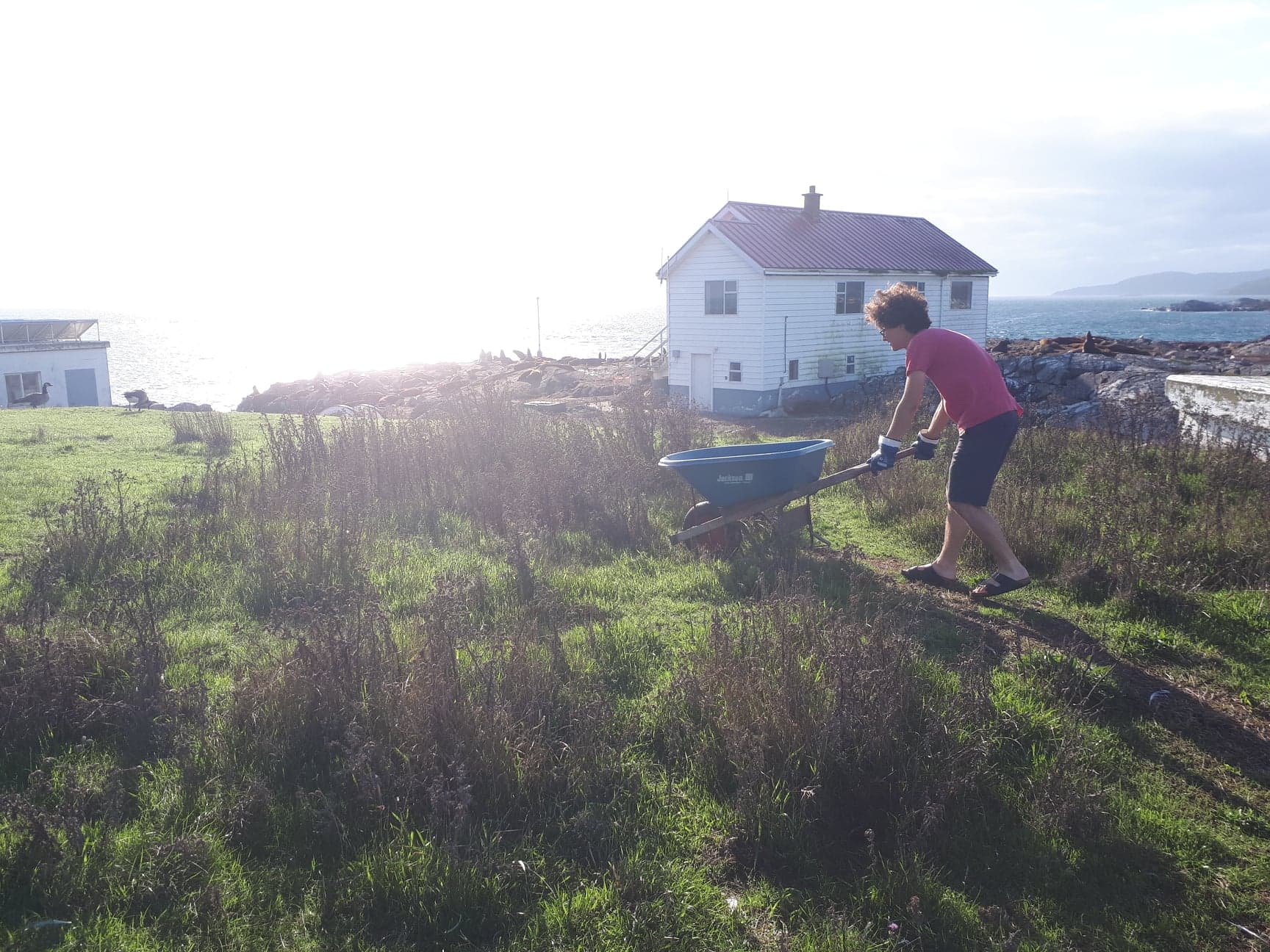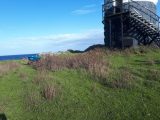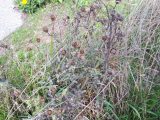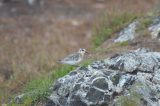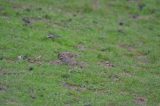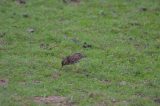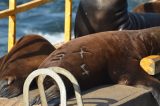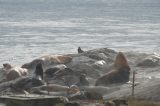Invasive Species: Canada Thistle Removal
We removed 6 large garbage bags full of invasive “Canada” thistles over the past few days. Considered a “noxious weed” under the BC Weed control act, these perennial (grow back every year) weeds can reproduce through seed and root regeneration. Thought to have been introduced to North America via contaminated crop seed in the 1700’s, this plant is actually native to southeast Europe and Asia. Presumably they were introduced to Race Rocks by a visitor on clothing or equipment, or perhaps by an animal.
- A big patch of thistles
- Seeds
- Much better!
They can be a bit laborious to remove, due to their tap root and ability to regenerate through “cloning” (growing back if you leave the root in the ground). Incredibly, the seeds can remain viable for 3-6 years when buried at typical depth, and some up to 21 years (yikes!). Each plant produces an average of 1500 seeds, but can sometimes exceed 5000.
Because of this, we collected them into garbage bags to remove from the island instead of composting them where they would have the opportunity to reproduce. Unfortunately it appeared that these aggressively persistent weeds were whipper snipped in past seasons, allowing the seeds to disperse and roots to regenerate. Hopefully with some attentiveness, they can be eradicated from Race Rocks in the next few years. More information on other introduced plants available in this post from Garry Fletcher, 2006.
Weather:
- Sky partly cloudy, some sunshine
- Visibility 15+ miles (some fog last night)
- Wind 20-30 knots W
- Water choppy, whitecaps
Visitors:
- Today Laura (Pearson’s marine science teacher), and her class came for a bit for their first trip to Race Rocks! Two more classes will visit in the next couple of days.
- Less frequent eco-tourism traffic now that the summer tourism has slowed down. They have been getting quite close to the sea lions though, often causing them to climb over each other to get further away from the vessels. Since it has been overcast, we’ve been seeing the use of flash photography much more, which seems to audibly cause quite a stir.
Ecological:
- There have been some birds passing through that we don’t often see: western sandpiper, savannah sparrow, song sparrow, and juvenile sandpiper (or possibly sanderling- we have a hard time with bird ID!) Also, we think we spotted a yellow warbler a while back, but it was too speedy for us to snap a photo.
- The sea lions have continued to haul out- notably, there are typically over 100 animals on the jetty alone.
- Juvenile Sandpiper?
- Savannah Sparrow
- Song Sparrow?
- Rain evaporating off of the sea lions

